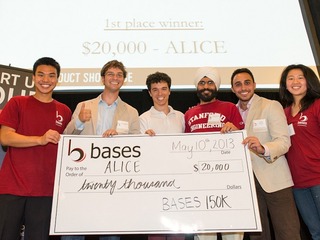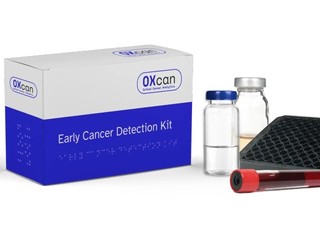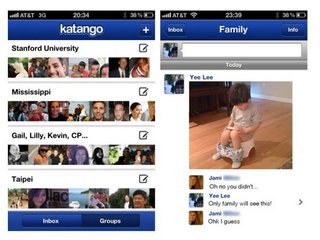

(Updated to reflect comment from the University of Kentucky)
A study done by research firm Startup Genome, called the Startup Ecosystem Report 2012, measured the top ecosystems around the world for startup innovation. And, to no one;s surprise, Silicon Valley was number one in every single category, from output to talent to funding. It has been, and remains, the hub for entrepreneuship around the world.
But how often to do we sit down and think of why that is?
It seems that, sometimes, it is easy to forget that this is not an organic trait. As in, there is nothing in the drinking water in Palo Alto that makes people in the area somehow better at coming up with world changing ideas.
Rather, I believe it has a lot to do with the ecosystem of the area, which fosters that type of creativity. And that includes a university system, most notably Stanford University and its Business Association of Stanford Entrepreneurial Students (BASES) program, which seeks to take students and model them into the next generation of entrepreneurs.
“I think one of the big reasons that Silicon Valley is Silicon Valley is thanks to the entrepreneurial community that there is here at Stanford, that’s very much fostered by entrepreneurial groups such as BASES,” said Zineb Laraki, the VP of External Relations at BASES, in an interview.
What is BASES?
Stanford BASES is an entirely student-run organization that focuses on business and entrepreneurial activities for Stanford student.
In addition, the 120 students running the organization, there is also a board of advisors that is composed of Stanford professors as well as past BASES contributors who are nominated to join the board. These include Jonathan Berger, former President of BASES, who went on to become product manager at Google twice and helped start two companies Picurio, which graduated Y Combinator, and Katango, which was acquired by Google; Rebeca Hwang, former lead organizer of the BASES Social E-Challenge Competition and a co-founder and CEO of YouNoodle; Ricky Yean, former BASES co-president and the CEO of Crowdbooster; and Othman Laraki, former Co-President of BASES, who was Twitter’s Vice President of Product, and a co-founder of MixerLabs, which was acquired by Twitter in 2009.
The largest student group at the University, it seeks to give those students the experience, and the opportunity, to learn what exactly it means to be an entrepreneur. It does this through different division, each one focusing on providing those students with a different aspect of being an entrepreneur.
These divisions include:
- Freshman battalion: the top freshmen at Stanford are recruited freshman and given exposure to entrepreneurial community. They have competitions, and BASES helps them to find internships at startups. It is also pretty competative to get into: over 100 applicants for 22 spots. “We mentor and groom them to become the next BASES,” Laraki said.
- Entrepreneurial Thought Leaders: a weekly speaker series, co-hosted by BASES and the Stanford Technology Ventures Program (STVP). It bring leaders from the worlds of business, finance, technology, education, and philanthropy, to come and share their insights. Past speakers have included Melinda Gates; Evernote CEO Phil Libin; Twitter creator Jack Dorsey; Pulse co-founders Akshay Kothari and Ankit Gupta; Tim Draper, the founder of Draper Fisher Jurvetso; and Daniel Ek, a co-founder of Spotify. Each lecture is put on video and offered on iTunes; they are among the top 10 listings on iTunesU.
- Hackspace: where weekly hackathons are run, with average of 80 people attending. These are open to public, and a recent hackathon with UC Berkely drew over 250 people.
- Entrepreneurship bootcamp: a one week long deep-dive into entrepreneurship that is meant to get the participants ready to launch their ideas. The program includes pitching and design workshops, marketing initiatives, media rundowns, sector-specific critiquing, and mentoring sessions with our all-star sponsors and partners. E-bootcamp is open to global communities, Laraki said, and there are teams applying from countries all over the word, including Norway and Chile.
- External relations: which included the BASES Startup Career Fair, which took place on January 17. Startint this year, students were able to submit their resumes online, creating a new talent portal.
The 150K challenge
The biggest draw for the program, though, may be the 150K challenge, which includes three divisions: the Entrepreneurship-Challenge (or E-Challenge), the Social E-challenge (which is the same thing as E-challenge, but with a social aspect) and the Products Showcase.
Each of these categories gives out $50,000 to their winners, hence the “150k” in the title.
While the E-challenge and Social E-challenge are business model competitions, while, for Product Showcase, the teams compete with working product prototypes and demo.
Laraki described the Product Showcase is a “science fair on steroids.”
To get into Product Showcase, companies have two application rounds: an early deadline, and a regular deadline. Companies can apply to either and still make it to the third round, which is the judging round, but BASES offers incentives to those that submit early, including workshops, mentorships, the ability to connect with judges and early access to resources.
This year, there were 30 to 40 applicants in the first round, of which 12 were chosen. The second round saw 80 to 90 applicants, and 40 were chosen. Ultimately, after a few teams dropped out, 47 companies were competing for the top prize.
The criteria to be chosen from all those applicants is two things, Oscar Wong, VP of Product Showcase, told me an interview: first, market potential and feasibility; second, innovation, and whether the idea is considered to be disruptive.
For the finale, Product Showcase came up with a new judging rubric of 10 questions, of which the companies would be scales from 1 to 5, Wong told me. They were questioned on criteria such as market potential, market size, and whether a VC would fund their company.
Companies are judged against former winners of the competition, but Wong also admitted that the juding process is still being molded to “address all different component” of each business.
At the end of judging on May 10, there were five E-Challenge Winners, four Social E-challenge winners and five winners of Product Showcase. Prizes ranged from $25,000 to $2,500.
Top prizes went to: AWAIR, a medical device company that develops patient-centered airway products for the intensive care unit, took top prize in the E-Challenge; Anjna Patient Education, a non–profit organization dedicated to empowering patients to take control of their own health through mobile (SMS and voice) technology, which won first prize in the Social-E Challenge; and ALICE, an artificial intelligence construction scheduler that can reduce schedule durations by an average of 45% as compared to leading industrial solutions, which came out on top of the Product Showcase
You can see the list of winners here.
In the years to come, Wong said, he hope to incorporate workshops to further develop products, as well as mentorships for Product Showcase companies, which the E and Social Challenge teams already have mentors because they are more established.
What makes BASES special
Founded in 1996, BASES is one of many university programs that seeks to helps students become better entrprenuers, both in the United States and abroad.
For example, MIT has its 100K Challenge, which was founded 24 years ago. It doles out a total of $350,000 in prizes, to startups in the Emerging Market, Energy, Life Sciences, Mobile, Products and Services and Web/IT categories. It also provides winners with a networks of entepreneurs, investors, and potential partners, as well as mentoring by professionals.
Harvard has its i3 program, which offers classes, seminars, workshops and office hours on innovation and entrepreneurship, and offers it i3 Innovation Challenge competition, where it gives out $600,000 in grants, space and services.
Another example is the University of Kentucky’s Innovation Network for Entrepreneurial Thinking (iNET), which was founded in 2011. The program includes the UK Venture Challenge, where an undergraduate team and a graduate team are each named winners and awarded $1,000 each. Two other teams, one undergraduate and one graduate, are awarded $500 each and named to participate with the two winning teams at the state competition, Idea State U.
There is also the New Venture Challenge at Chicago University, launched in 1996, where eight to 10 teams are selected to present at a daylong finals competition in May, before a panel of investors and entrepreneurs. In 2012, $225,000 in cash prizes and business services were awarded to the winners and finalists.
So what sets BASES apart from these other programs? The others are missing one key factor, which Stanford has and they do not, said Wong: the Product Showcase.
“Product showcase fills a void that’s really missing in the entrepreneurship space, which is a competition where people compete with products instead of business plans and business models,” Wong said.
The reason this is a better way to hold a competition he said, is because engineers might know now to build a demo, but might not have the skill set to know how to do a business model canvas and how to start a business.
“Across these top-tier universities you have this social media and this business plan competition, but you’re missing that product based competition, and I think that’s where we kind of stand out amongst the group.”
Part of BASES also has to do with global outreach to different communities around the world, which it does partially through E-Bootcamp. While these communities will have to obviously cater their programs to their own specific needs, they can still emulate what BASES does said Laraki.
But, more than anything else, being the biggest entrepreneurial organization on campus, BASES obviously the most to Stanford students, who it allows to get a hands on view of what it actually means to be an entreprenuer.
“I’m about to graduate and this has been, for me, one of the greatest experience I’ve had here at Stanford,” said Laraki. “Being part of bases has taught me so much more about myself and entrepreneurial community here that its just been amazing.”
(Image source: http://www.stanforddaily.com)
















